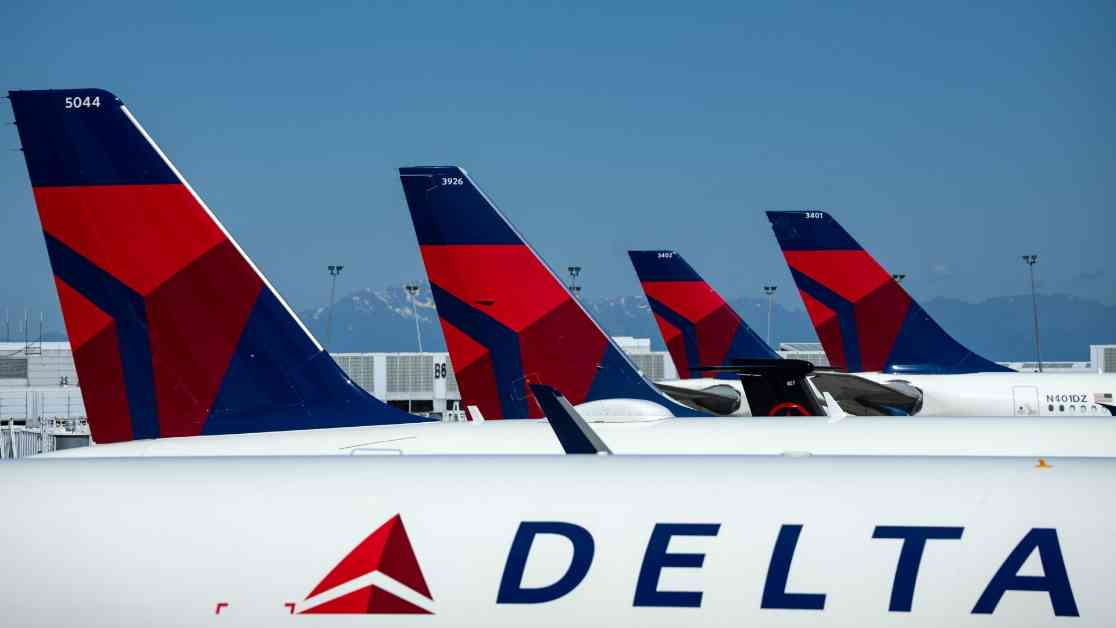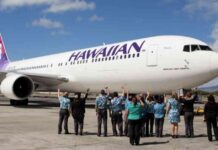Airlines around the world are facing a challenging environment as flight costs continue to rise. In response, many carriers are scaling back their growth plans to adapt to the changing landscape. This shift is evident in recent announcements from major airlines like Delta and Alaska, who have adjusted their profit forecasts and revenue expectations for the coming months.
Airlines Reporting Better Unit Revenues
Alaska Airlines recently raised its third-quarter profit forecast to a range of $2.15 to $2.25 per share, up from a previous outlook of no more than $1.60 per share. The airline also expects unit revenue to rise by as much as 2%, a positive sign for their financial performance. Similarly, Delta Air Lines announced that domestic and trans-Atlantic unit revenue would be up in September compared to last year. However, the airline cited the CrowdStrike outage in July as a factor that will limit unit sales growth to no more than 1% for the quarter, down from a previous forecast of up to 4% higher.
Impact of Technology Outages
The CrowdStrike outage had a significant impact on Delta’s operations, leading to the cancellation of around 7,000 flights. Despite this setback, Alaska Airlines reported a tailwind from the outage, noting that their revenue performance had exceeded expectations. The outage affected Delta customers more than those on other airlines, highlighting the challenges that carriers face when dealing with technology disruptions.
Delta’s president, Glen Hauenstein, reassured investors that the airline is not seeing a lingering impact on bookings from the outage. This indicates that customers are willing to overlook occasional disruptions in favor of reliable service and competitive pricing. The airline industry is highly competitive, and carriers must prioritize customer satisfaction to maintain their market share.
Changing Market Dynamics
For a long time, airlines have been grappling with record numbers of travelers but lower fares and weaker pricing power. However, recent trends suggest that this may be changing. The latest U.S. inflation report showed a 3.9% increase in the airfare price index in August, following five consecutive months of declines. This indicates a shift towards higher ticket prices, which could benefit airlines struggling with profitability.
Frontier Airlines and JetBlue Airways are among the carriers that have adjusted their forecasts to reflect changing market dynamics. Frontier Airlines now expects to break even this quarter on an adjusted basis, after previously forecasting margins ranging from -3% to -6%. JetBlue raised its unit revenue growth forecast for the current quarter due to higher demand and a benefit from re-accommodating customers affected by other airlines’ cancellations in July.
Challenges in the Industry
U.S. airlines have faced challenges this year due to delays in aircraft deliveries from manufacturers like Boeing and Airbus. This has forced carriers to slow down or halt their hiring plans, as demand moderates after a period of rapid expansion. The industry is also grappling with technology outages, which can have a significant impact on operations and customer satisfaction.
Despite these challenges, airlines are adapting to the changing landscape by adjusting their growth plans and focusing on improving profitability. The recent announcements from Delta and Alaska reflect this strategic shift, as carriers prioritize financial performance in a competitive market.
In conclusion, rising flight costs and changing market dynamics are prompting airlines to reevaluate their growth plans and revenue expectations. The industry is facing challenges such as technology outages and delayed aircraft deliveries, but carriers are taking steps to adapt and thrive in a competitive environment. Customers may have to pay more to fly in the coming months, but airlines are working to ensure a positive travel experience while maintaining profitability.






















